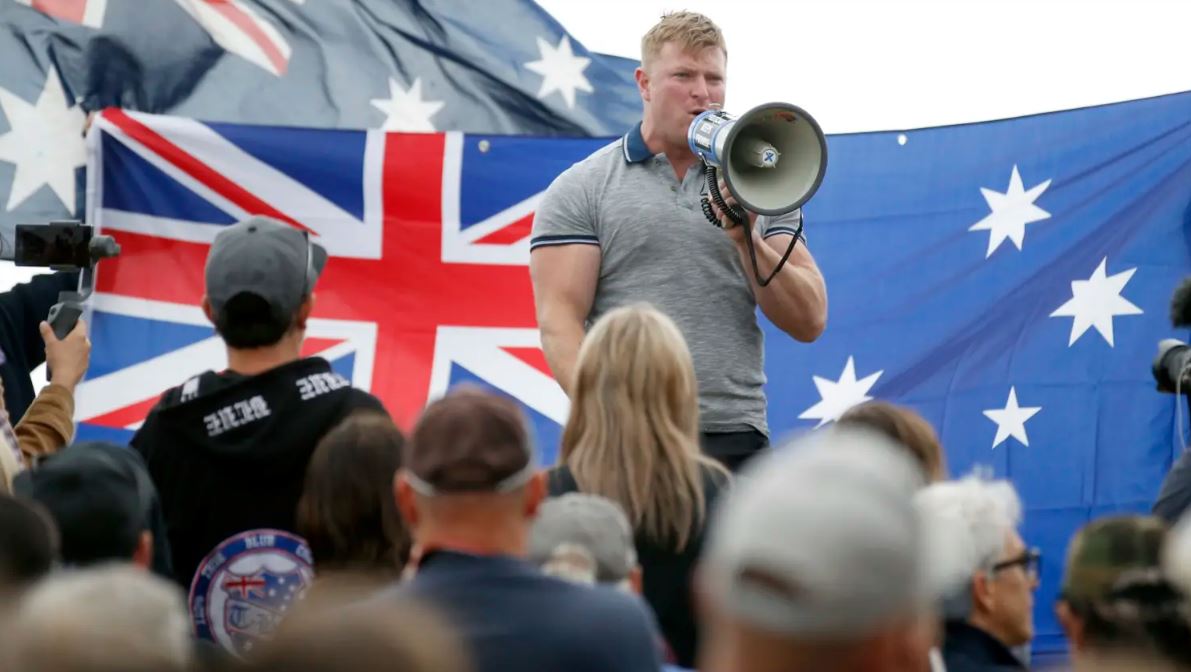The far-right has cycled through many enemies over the years but fierce infighting, ego and lack of leadership continues to ensure their biggest opponent is themselves.
On October 15, 2015, far-right kingpin Shermon Burgess posted his final video on the popular nationalist Facebook page, The Great Aussie Patriot. In the two-minute clip, which was filmed on a phone and edited with awkward jump cuts, he looked distressed.
“G’day patriots,” he started. “Now just letting you know what’s going on. I’m going to be handing full leadership of the United Patriots Front over to Blair Cottrell. I won’t be doing it anymore.”
Reclaim Australia – the series of rallies in 2015 that turned out thousands of anti-immigrant, anti-Islam “patriots” – saw Cottrell as the next golden child. And so did Cottrell. One researcher says he views himself as the “sexy Fuhrer”: a muscular, blond, articulate leader who has said Jews are “a much deadlier enemy than the violent Islamic pillagers”, and that to keep women in line you should “crack them around the ear every once in a while”.
But in his three-year tenure as de facto leader of Australia’s far-right, the “sexy Fuhrer” has failed. The movement has dramatically weakened since its Reclaim Australia days – something that could have been predicted from watching Burgess’ resignation video three years ago.
“I won’t be making videos and I’m taking down my page,” he said, before adding: “Now it’s not because of media, it’s not because of death threats from Islam – even though I’ve received many of those.
“It’s because of the dumb f—ing patriots out there.”
Read the article by Max Koslowski in The Age.

